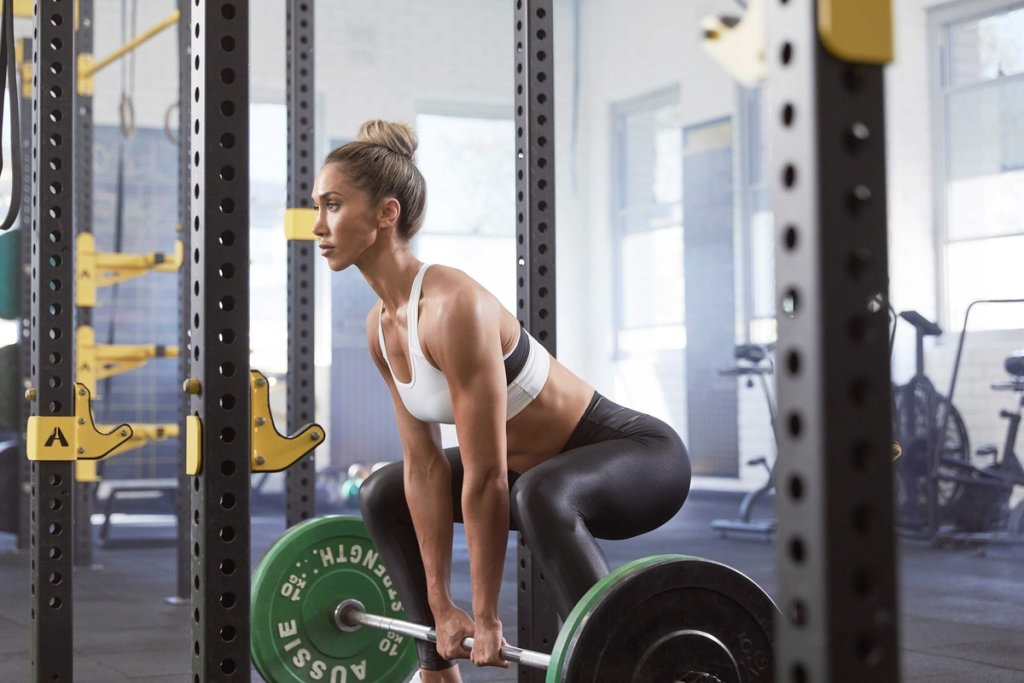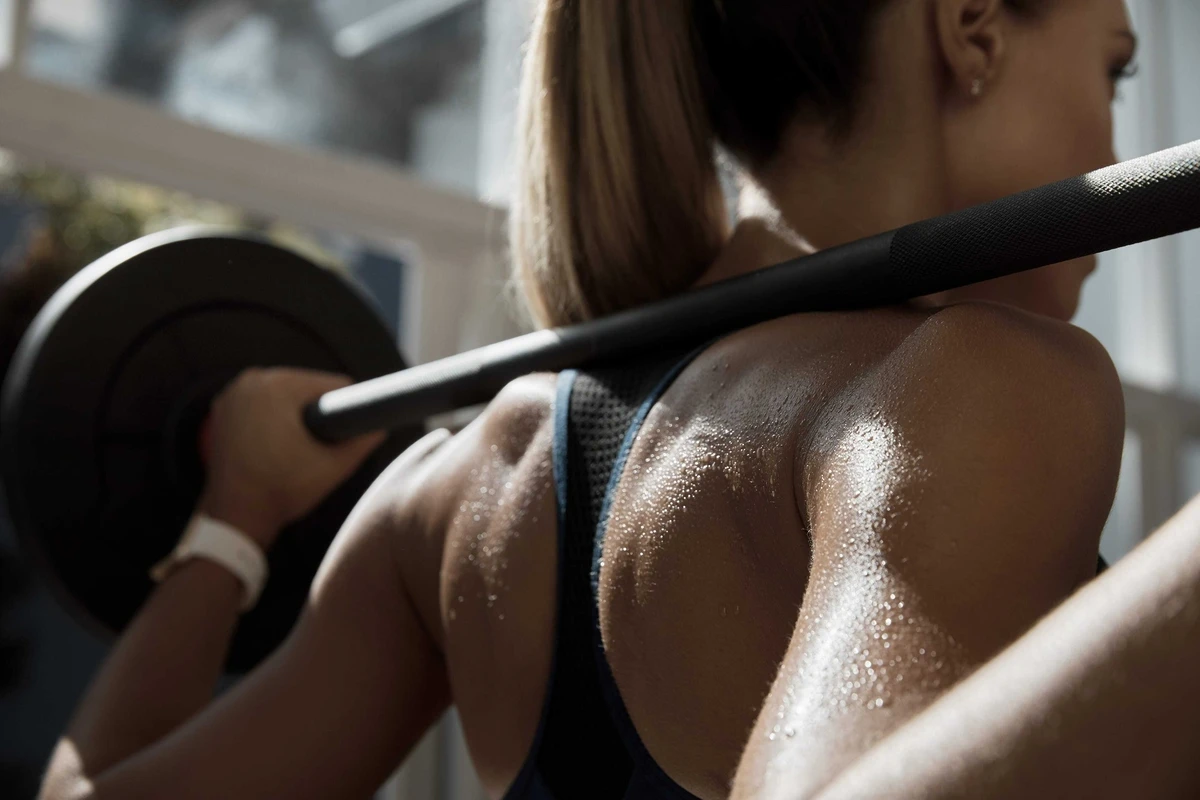How One-Rep Max (1RM) Can Enhance Your Training

December 1, 2020

Strength training can increase muscle mass and bone strength, improve body composition, increase flexibility, and reduce your risk of injury - not to mention the feeling of empowerment it brings! It not only benefits your fitness, but can also make you more capable and resilient in your everyday life.
If you’ve been a fan of this training style for a while and have established your base strength in each of the three key lifts of strength training — the squat, deadlift and bench press — you're probably feeling ready to take your training to the next level. You can progress by using your one-rep max (also known as 1RM or one-repetition maximum) to determine the weight to use for each exercise.
The BUILD program in the Sweat app is designed to increase your overall strength by using heavy weights and lower reps to build strength, and higher reps of smaller weights to increase muscle definition.
Calculating your 1RM is a great way to determine the exact weight you should be using for these exercises to ensure you’re getting the best results from your training.
What is 1RM?
1RM is the maximum weight you can lift if you only have to do one repetition of an exercise.
It's considered the “gold standard” test of strength. When you lift your 1RM weight, you shouldn't be able to complete a second repetition. The idea is that you give everything you have in that single rep — that's where the name comes from.
Why should I use 1RM in my training?
Knowing your 1RM allows you to choose the right weight for each exercise so you can maximise your training and progressively build your strength.
When you train at a specific percentage of your 1RM, as recommended in BUILD, you’ll be following a scientifically proven training technique to achieve your fitness goals.
Using your 1RM, combined with other training techniques such as variable resistance training, can also help you to overcome a training plateau.
It’s a tool any woman can use to strategically increase strength — it's not just for bodybuilders and powerlifters.
How is it different to RPE?
RPE and 1RM are both important and useful measures of training intensity.
Your rate of perceived exertion (RPE) is a subjective rating based on how strenuous a particular exercise feels to you. This might fluctuate based on how you're feeling, whether you've eaten enough or slept well, if you’re experiencing stress, and what your total training load for the week looks like.
1RM is an objective measure of your training ability. It represents your total maximum strength for a given lift, under ideal conditions. You may not be able to repeat your 1RM every day, especially when you have had a hard training week or poor sleep.
How do you calculate your 1RM?
You can calculate your 1RM using this formula:
Weight x reps x 0.0333 + weight = estimated 1RM
For example, if you can usually bench 60kg for 6 reps, your 1RM calculation will look like this:
60 x 6 x 0.0333 + 60 = 71.988. Round it up to 72kg, and you have your estimated 1RM.

How do you use 1RM in a workout?
Your 1RM is used to determine how heavy your weights should be in your workouts. Usually, this will be a percentage of your 1RM.
When you first start strength training, you should choose a weight that you can use to complete 10-12 repetitions of an exercise. The last few reps should feel tough, but achievable.
As you gain strength, you can increase the weight you lift and decrease the number of repetitions. You'll use your 1RM to determine the amount you should be lifting to effectively increase your overall muscle strength.
When you train with the BUILD program, you'll use your five-rep max to calculate your 1RM. This is a safer way to test your absolute strength, and means that you can complete the test at the gym even if you don't have someone there to spot you.
When doing a 1RM or five-rep max test, remember that good form ALWAYS needs to come first to protect yourself from injury, recruit the correct muscles and gain strength in a balanced way.
Here’s an example of how you might use your 1RM in your weight training:
Start at 70% of 1RM
To improve your endurance, use a weight that’s 70% of your 1RM for sets of 12-20 reps.
Move up to 80% of 1RM
To stress your muscle fibres, use a weight that’s 80% of your 1RM for sets of 7-12 reps.
Increase to 90% of 1RM
To teach your muscles power and speed, use a weight that’s 90% of your 1RM for 3-4 sets of 3-4 reps. Make sure you take enough rest and recovery time in between each set.
Increase to 95% of 1RM
To push past your limits and focus on strength, use a weight that’s 95% of your 1RM for sets of just 1-3 reps. This will feel heavy, so make sure you have a spotter or safety mechanisms on your equipment to keep you safe during each lift.
Do any of the Sweat programs use 1RM?
Yes! BUILD is all about improving your 1RM. You’ll complete a small assessment in Week 1 of BUILD to determine your 1RM for three main lifts: the deadlift, bench press, and squat.
You then train with weights at a specific percentage of your 1RM, maintaining correct form to help you slowly and safely increase your 1RM over time.
How often should you test your 1RM?
In BUILD, you’ll test your 1RM every 12 weeks, but you don't actually need to test it very often.
Many professionals or experienced lifters only test it once or twice a year. This means they can work to a structured program that progressively overloads their muscles and includes plenty of time for rest and recovery.
Is lifting heavy weights really better than lifting light weights?
It all depends on what your training goals are. If you want to increase muscle volume, lighter weights are just as effective as heavy weights. However, if you want to increase muscle strength, lifting heavy weights is more effective.
How reliable is the 1RM test?
Numerous studies have assessed the reliability of the 1RM test. In 2020, a systematic review published in Sports Medicine investigated the test’s reliability and concluded that it is a good to excellent way to assess muscular strength. This is regardless of resistance training experience, number of sessions, exercises, part of the body assessed, and the sex or age of participants.
In 2012, a study by Dongguk University examined the reliability of the 1RM test based on muscle group and gender. The researchers came to a similar conclusion - that 1RM testing is a reliable measurement to assess muscle strength changes regardless of muscle group location or gender.
1RM is the way to unlock smarter training
When you follow a structured workout program like BUILD that applies your 1RM, over time you can gradually increase the amount you can lift for each compound exercise.
You’ll gain confidence, build strength, and with discipline and consistency, one day you might even lift a weight you'd previously thought was impossible! Who doesn’t love the feeling of a PB?
As you learn more about weight training, you'll discover that there are many ways to increase your strength — variable resistance training is a technique you can use to advance your 1RM and break through a training plateau.
Looking for more workout advice? Check out these workout tips for inspiration.

A more empowered you starts with Sweat, and our editorial team is here to bring you the latest fitness tips, trainer recommendations, wellbeing news, nutritional advice, nourishing recipes and free workouts.
* Disclaimer: This blog post is not intended to replace the advice of a medical professional. The above information should not be used to diagnose, treat, or prevent any disease or medical condition. Please consult your doctor before making any changes to your diet, sleep methods, daily activity, or fitness routine. Sweat assumes no responsibility for any personal injury or damage sustained by any recommendations, opinions, or advice given in this article.
Fitness